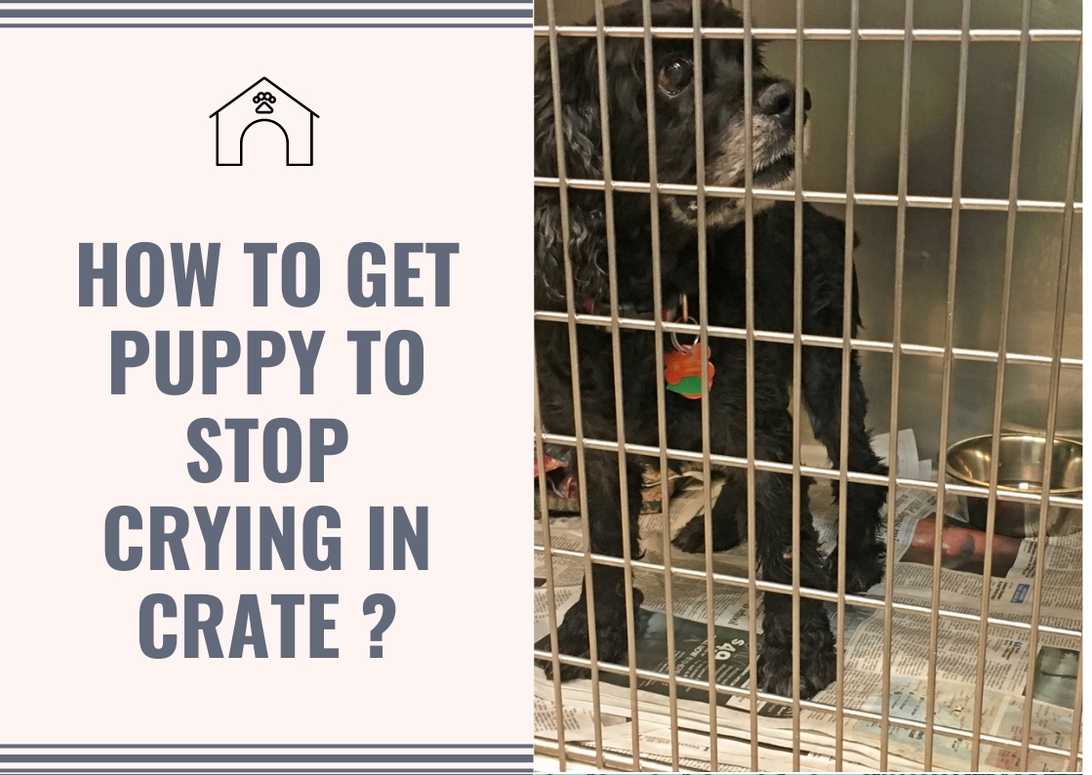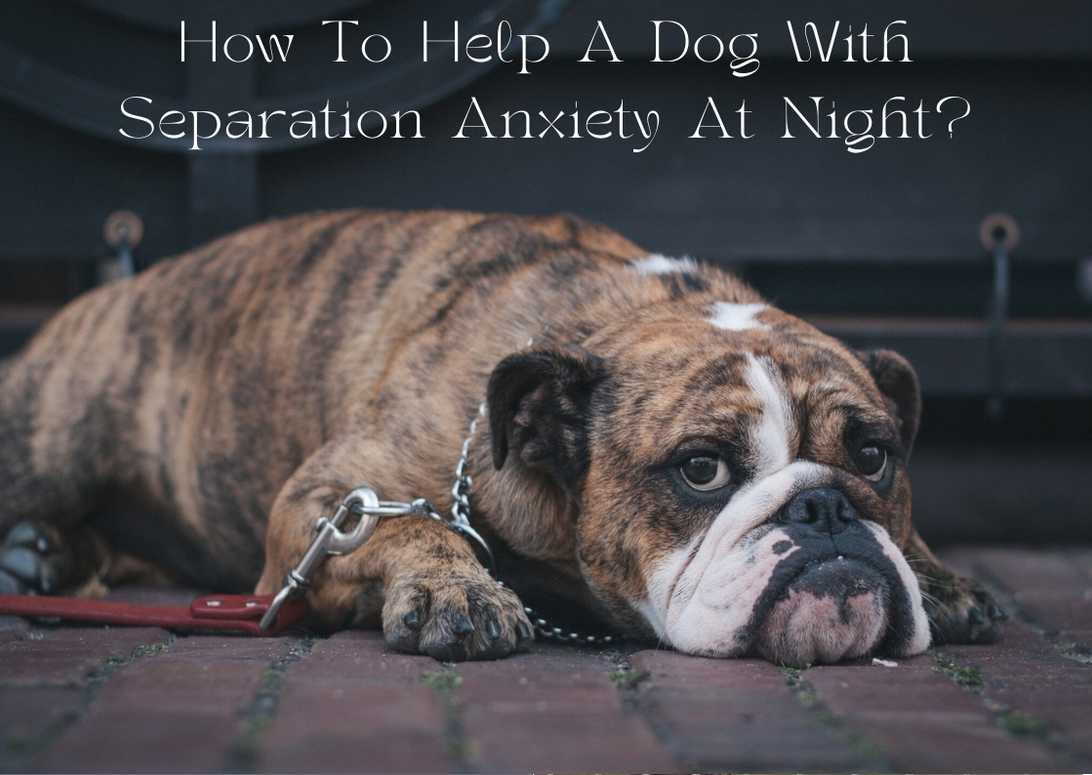How To Get Puppy To Stop Crying In Crate ?
Getting a new puppy can be an exciting and rewarding experience, but it can also come with its challenges. One common challenge is dealing with a puppy crying in their crate at night. As a proud dog owner, I know how frustrating and heartbreaking it can be to hear those plaintive cries.
But fear not! There are simple strategies that you can try to provide comfort and help your furry friend settle down.
Firstly, creating a comfortable environment for your puppy is key. Placing a cozy blanket over their crate can create a sense of security, making them feel safe and snug. Additionally, consider keeping the crate in a populated area during the day and near your bedroom at night. This way, your presence will help alleviate their anxiety and make them feel more secure.
Secondly, establishing a routine is crucial for helping your puppy adjust to their crate. Stick to consistent times for taking them outside to do their business and avoid giving in to their cries when they’re in the crate. Ignoring their cries may seem tough initially, but it teaches them that crying won’t get them what they want. With time and consistency, they’ll start associating the crate with positive experiences like meals or playtime outside.
Remember, patience is key when it comes to helping your puppy stop crying in the crate. By providing comfort, establishing routines, and using positive reinforcement techniques consistently over time, you’ll help your furry friend settle into their crate peacefully throughout the night.
Important Points
- Creating a comfortable and secure environment for the puppy is crucial in helping them stop crying in their crate.
- Establishing a consistent routine and sticking to it is key in helping the puppy adjust to the crate.
- Using calming techniques such as white noise machines, cozy bedding, and calming scents can promote better sleep and reduce crying.
- Seeking professional help from a dog trainer or behaviorist can provide valuable insights and personalized strategies to help the puppy overcome separation anxiety and stop crying in the crate.
How to Help Your Puppy Sleep
If your puppy won’t stop crying in the crate at night, try creating a cozy and peaceful sleep environment by placing a soft blanket inside and dimming the lights to help them relax and drift off to dreamland.
Creating a bedtime routine can also be helpful in signaling to your puppy that it’s time to wind down for the night. This can include activities such as a short walk, some gentle playtime, or even a calming massage.
Additionally, using white noise machines can provide soothing background sounds that can drown out any external noises that might be disturbing your puppy’s sleep.
Introducing a cozy bed specifically designed for crate use can also make a big difference in helping your puppy feel comfortable and secure. Look for beds with soft materials and extra padding for added comfort.
Another strategy is implementing calming scents in the sleeping area. Lavender or chamomile sprays or diffusers can create a relaxing atmosphere that promotes better sleep for your furry friend.
Utilizing crate training toys is another effective method to help your puppy settle down in their crate at night. These toys are designed to keep them occupied while providing comfort and security. Choose toys that are safe for unsupervised use and ones that have different textures or features to engage your pup’s senses.
Transitioning into the subsequent section about ‘crate training basics’, it’s important to remember that each puppy is unique, so it may take some trial and error to find what works best for yours.
Crate Training Basics
By creating a cozy and familiar space, I found that my puppy quickly became more comfortable in their crate. I used positive reinforcement and rewards to make the crate a positive experience for my furry friend. I also followed a crate training schedule, gradually increasing the time they spent in the crate each day. This allowed them to adjust to being confined without feeling overwhelmed.
I learned some helpful crate training tips along the way. For instance, making sure the crate was located in a populated area during the day helped alleviate any feelings of isolation for my puppy. Placing a blanket or towel over the crate provided a sense of security and comfort. When addressing any crate training problems, consistency was key. By sticking to our routine and patiently working through any challenges, we ultimately achieved success with crate training.
Creating a comfortable environment for your puppy is an essential step in helping them feel at ease in their crate.
Creating a Comfortable Environment
To ensure your furry friend feels right at home in their crate, it’s important to create a cozy and inviting environment that they can’t resist. Here are a few tips on how to make the crate as comfortable as possible:
- Crate bedding: Adding soft and comfortable bedding, such as blankets or a dog bed, can make the crate more inviting for your puppy. Make sure to choose materials that are easy to clean in case of accidents.
- Noise cancellation: Puppies can be easily startled by loud noises, so using noise-canceling techniques can help create a peaceful atmosphere inside the crate. You can try placing the crate in a quiet area of your home or use white noise machines to drown out any external sounds.
- Temperature control: Keeping the temperature inside the crate comfortable is essential for your puppy’s well-being. Make sure the room is neither too hot nor too cold, and consider using a fan or heater depending on the weather.
In addition to these factors, considering the size of the crate is crucial. It should provide enough space for your puppy to stand up, turn around, and lie down comfortably without being too spacious. Lastly, incorporating familiar scents by placing an item with your scent or their favorite toy inside the crate can provide reassurance and comfort.
By creating this cozy environment for your puppy in their crate, you’ll be helping them feel safe and secure. Now let’s move on to establishing a routine for successful crate training without causing unnecessary stress for both you and your pup.
Establishing a Routine
Now, let’s dive into the key aspect of successfully crate training your furry friend: establishing a consistent routine that will keep both you and your pup stress-free.
When it comes to crate training, consistency is crucial. This means sticking to a set schedule for your puppy’s potty breaks, meals, and crate time. By establishing consistency in these areas, you’re providing clear expectations for your puppy and helping them feel secure in their routine.
One important aspect of establishing consistency is implementing nighttime potty breaks. Puppies have small bladders and may not be able to hold their urine throughout the night. To prevent accidents and crying in the crate, make sure to take your puppy outside for a bathroom break right before bedtime. This will help them empty their bladder and reduce the chances of needing to go during the night. Gradually increase the time between nighttime potty breaks as your puppy gets older and can hold their bladder for longer periods.
Creating a soothing bedtime routine can also help calm your puppy before placing them in the crate for the night. This can include activities such as gentle playtime or a short walk followed by some quiet time together. By consistently following this routine every night, you’re signaling to your puppy that it’s time to wind down and prepare for sleep.
Incorporating these elements into your crate training schedule will greatly help in getting your puppy to stop crying in the crate. However, remember that positive reinforcement techniques also play an important role in crate training success.
Positive Reinforcement Techniques
If your little buddy continues to serenade you with their vocal talents all night, it might be time to try out some positive reinforcement techniques.
Crate training methods can be very effective in teaching your puppy to associate the crate with a calm and safe space. One technique is reward-based training, where you reward your puppy with treats or praise when they enter the crate willingly or remain quiet inside. This helps them develop a positive association with the crate and motivates them to behave appropriately.
Another approach is using calming techniques such as playing soothing music or providing a comforting blanket or toy inside the crate. These can help create a relaxing environment for your puppy and make them feel more at ease.
Desensitization exercises are also helpful in getting your puppy to stop crying in the crate. Gradually introduce short periods of time in the crate while you’re still at home, gradually increasing the duration over time. This helps your puppy get used to being alone in the crate without feeling anxious or distressed.
Additionally, creating a safe space around the crate can help alleviate any fears or anxieties your puppy may have. Place familiar items, like their bed or toys, nearby so they feel secure and protected.
By utilizing these positive reinforcement techniques, you can encourage your puppy to feel more comfortable and relaxed in their crate. However, if despite these efforts, your furry friend continues to struggle with separation anxiety and excessive crying, it may be necessary to address this issue further.
Addressing Separation Anxiety
Dealing with separation anxiety can be a challenge, but there are strategies that can help your furry friend feel more at ease. Recognizing signs of separation anxiety is an important first step in addressing the issue. Some common signs include excessive barking or whining when left alone, destructive behavior like chewing on furniture or doors, and going to the bathroom inside the house even though they’re usually potty trained.
Understanding the causes of separation anxiety in puppies is also crucial. It could be due to a lack of socialization during their early months, a traumatic event that occurred when they were alone, or simply being overly attached to their owners.
To alleviate separation anxiety, implementing gradual desensitization techniques can be effective. This involves slowly increasing the amount of time your puppy spends alone in their crate while gradually building up their comfort level and confidence. Start by leaving them alone for just a few minutes at a time and gradually increase it over days or weeks. Using calming products and toys can also help soothe your puppy’s anxiety. Consider using pheromone diffusers or sprays that mimic the scent of their mother, as well as interactive toys that provide mental stimulation and distraction.
If your puppy’s separation anxiety is severe and none of these techniques seem to make a significant difference, it may be worth considering medication options. Consult with your veterinarian who can recommend appropriate medications that can help manage your puppy’s anxiety levels. However, seeking professional help should always be considered before resorting to medication as it’s important to fully understand the underlying cause of the anxiety and address it appropriately.
In order to address severe cases of separation anxiety effectively without relying solely on medication, seeking professional help from a dog trainer or animal behaviorist is highly recommended. They have experience working with anxious dogs and will be able to create a customized training plan tailored specifically for your puppy’s needs. Remember, addressing separation anxiety takes time and patience, but with consistent effort and the right strategies, you can help your puppy feel more comfortable and secure when they’re left alone.
Seeking Professional Help
Consider reaching out to a professional trainer or behaviorist for expert guidance in addressing your furry friend’s separation anxiety and creating a customized plan for their specific needs. Professional training can provide you with valuable insights into puppy behavior and help you understand the underlying causes of their distress.
Trainers and behaviorists can offer separation anxiety solutions tailored to your puppy’s unique situation, teaching them calming techniques that can alleviate their anxiety. They may also provide crate training tips that can help your puppy feel more secure and comfortable in their crate.
Seeking professional help is an important step in ensuring the well-being of your puppy and helping them overcome their separation anxiety. A trained professional can assess your puppy’s behavior, identify any underlying issues, and develop a comprehensive plan to address their specific needs. They will work closely with you to implement effective strategies that gradually desensitize your pup to being alone, using positive reinforcement techniques to build confidence and reduce anxiety.
With the guidance of a professional trainer or behaviorist, you can create a supportive environment for your puppy as they learn to cope with being crated and develop healthy coping mechanisms for when they are left alone. Remember, seeking expert assistance is not only beneficial for your furry friend but also for you as a pet owner, providing peace of mind knowing that you’re doing everything possible to help your beloved companion thrive.
Frequently Asked Questions
How long does it typically take for a puppy to stop crying in the crate?
It typically takes a few weeks for a puppy to stop crying in the crate. Consistent crate training methods, addressing common reasons for crying, and effective soothing techniques can help. Gradually increasing crate time without crying is important. If the puppy continues to cry, potential issues should be addressed.
Can I use a crate cover or blanket to help my puppy feel more secure in the crate?
Yes, using a crate cover or blanket can help your puppy feel more secure in the crate. Crate covers are crate accessories that provide comfort and can reduce crate anxiety during crate training.
Should I let my puppy sleep in my bedroom at night to help them feel more comfortable?
Yes, co-sleeping with your puppy in your bedroom at night can have advantages. It creates a safe sleeping environment, allows you to introduce a comfort item, establish a bedtime routine, and gradually transition them to the crate at night.
What should I do if my puppy starts crying in the crate during the day?
If your puppy starts crying in the crate during the day, it could be a sign of separation anxiety. To address this, establish a routine and use gradual crate introduction techniques. If the problem persists, consider seeking professional help.
Are there any specific toys or treats that can help calm a crying puppy in the crate?
Calming chews can help soothe a crying puppy in the crate by promoting relaxation. Interactive puzzle toys keep puppies entertained and calm. Scented toys with calming scents can also provide comfort. Frozen treats distract puppies from crying, and certain types of music have a calming effect.
Conclusion
In conclusion, crate training can be a beneficial tool to help your puppy settle down and stop crying at night. By creating a comfortable environment with a blanket over their crate and placing it in a populated location during the day and near your bedroom at night, you can provide them with a sense of security.
Establishing a consistent routine of taking them outside and ignoring their cries can also teach them to associate their crate with positive experiences. However, it’s important to address any separation anxiety your puppy may have, as this can contribute to their crying. If you’re still having trouble after trying these techniques, don’t hesitate to seek professional help.
One interesting statistic that highlights the effectiveness of crate training is that according to the American Kennel Club, over 90% of puppies successfully adapt to sleeping in crates within a few weeks of consistent training. This statistic demonstrates that with patience and consistency, most puppies are able to overcome their initial anxieties and learn to feel secure in their crates.
Remember, every puppy is unique and may require different strategies or additional support, so don’t get discouraged if your furry friend takes longer than expected to adjust. With time and effort, you’ll be able to create a peaceful sleeping environment for both you and your puppy.








